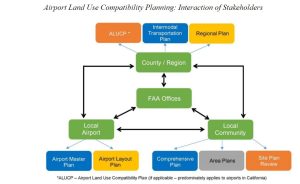
A new research paper from Washington State Department of Transportation Aviation Division, authored by David Ison (“Compatible Land Use for Heliports and Vertiports: A Safety Perspective”) suggests that eVTOL operations will require greater final approach and take- off area (FATO) dimensions than recommended by the regulator, if safety risks are to be reduced.
“The distribution of accidents identified in this study makes clear that current safety zone recommendations for heliports may be inadequate for both helicopter and eVTOL operations,” according to the study. “Using the Joby pre-production aircraft as an example, which has a wingspan of 35 feet, under current standards, the FATO would be 70 feet by 70 feet. Including the recommended safety area, the protected area around the vertipad would be 105 feet by 105 feet or 11,025 square feet. In contrast, the area with elevated risk identified in the current study (area in which 75% of accidents occurred) was within an approximate radius of 170 feet which translates to 28,900 square feet, or just over two and half times larger than current standards.
“This reinforces the need to develop appropriate compatibility and safety zones that align with available accident data.”
The study aims to provide a better understanding of safety and land use issues near heliports and vertiports through a focus on the geographic distribution of helicopter accidents in relation to the point of takeoff or landing. “Accident data exhibited a stochastic spatial pattern of accident occurrences, with the highest concentration occurring within a proximity of 40 feet from the designated takeoff/landing location. Almost all (90%) accidents took place within 400 feet of the takeoff/landing reference point,” according to the study data.
The study recommends “heliports and vertiports should be located in areas that allow for operations with minimal conflict with obstacles/buildings and impact on adjacent communities.”
For more information
https://ojs.library.okstate.edu/osu/index.php/IJAR/article/view/9686/8547
(Image: Shutterstock)


